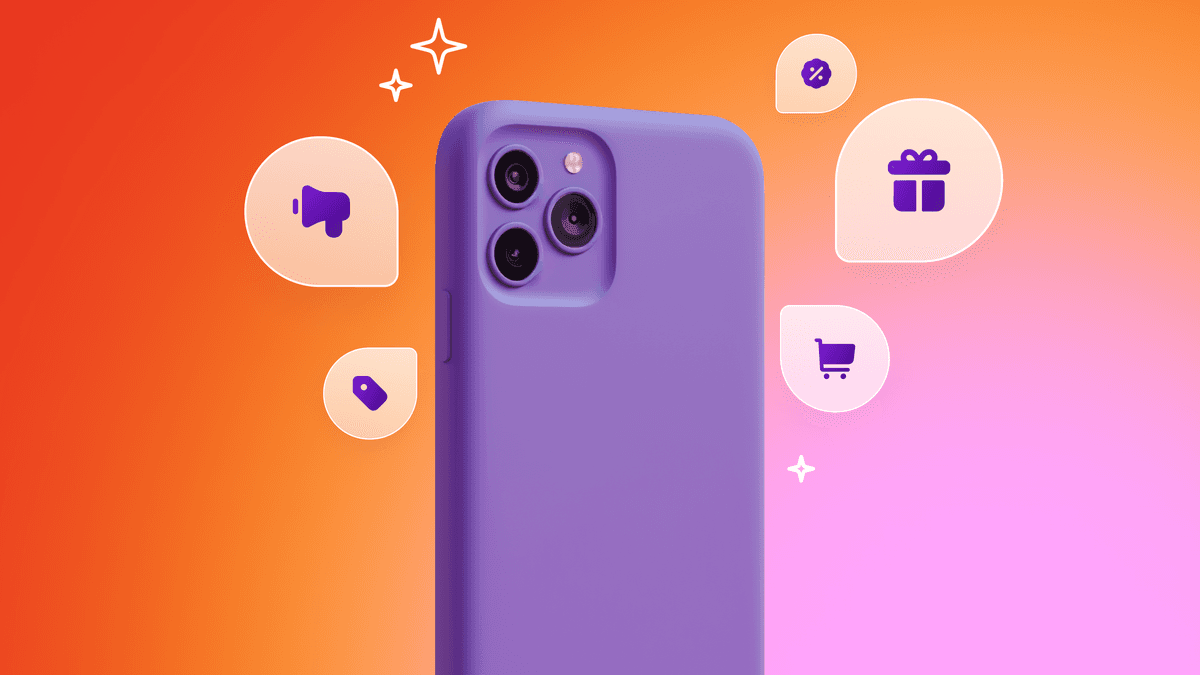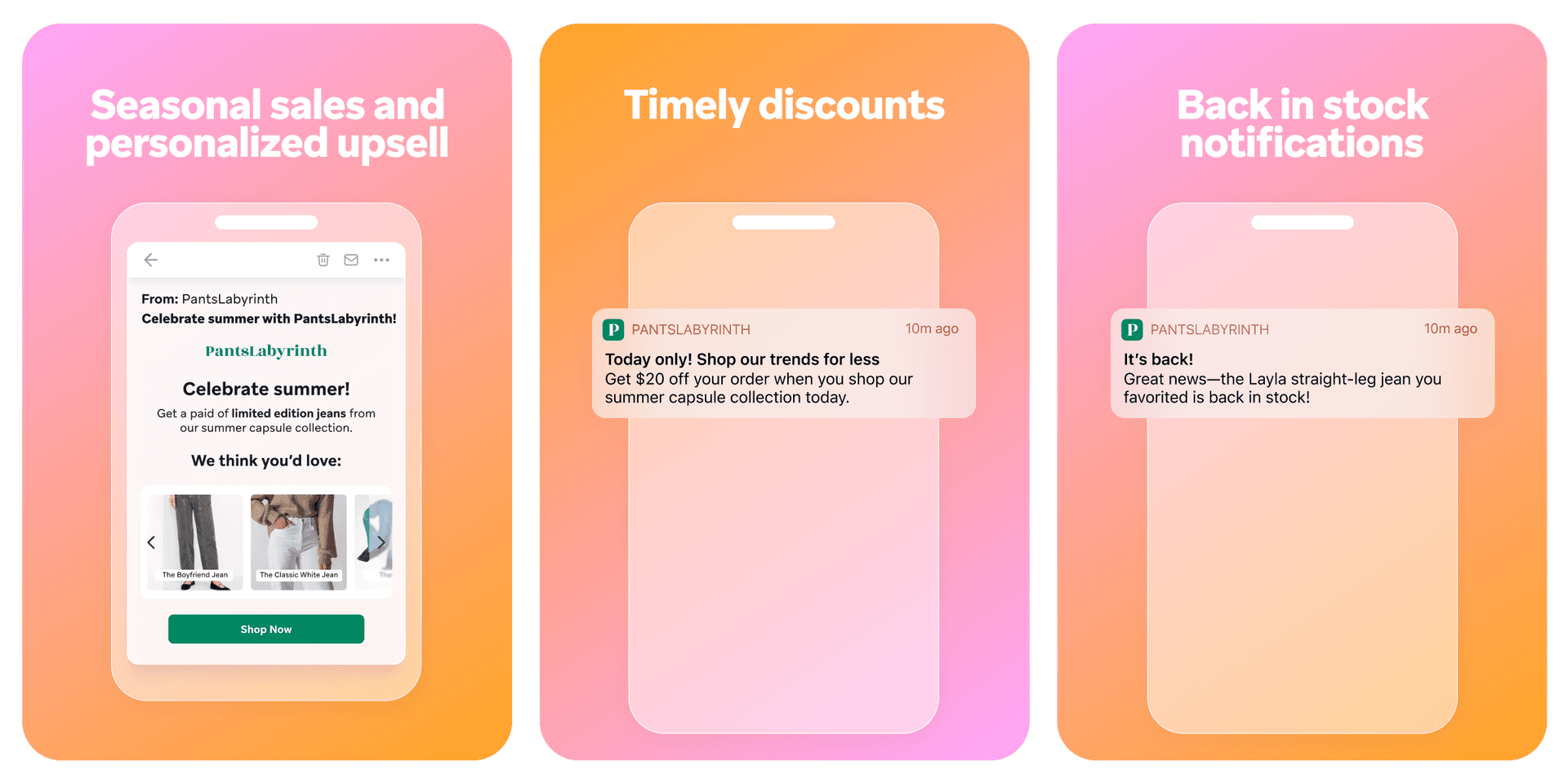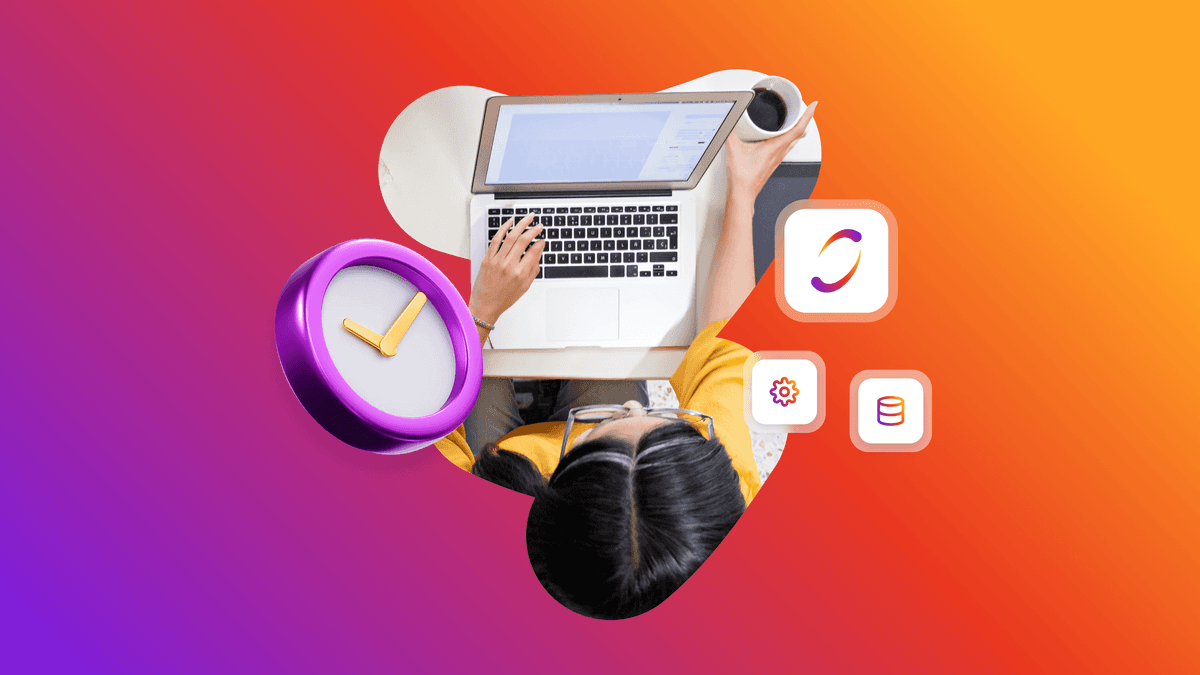What’s Promotional Messaging?
Published on February 25, 2025/Last edited on February 25, 2025/14 min read


Team Braze
Done well, promotional messaging builds customer engagement, drives loyalty, and boosts sales. It makes every customer feel valued and understood by your brand.
Think about your inbox. Which emails do you always open? Which app has notifications enabled? Whose ping do you look forward to in your pocket?
What does that brand do differently to earn your attention? Maybe it has great offers on things you love? Or seems to read your mind and know exactly what you need.
When a brand knows what makes you tick, it makes you click. And that opens the door to higher engagement, revenue, and customer lifetime value.
Whether you’re looking to promote a new product, seasonal sale, or special event, this guide will walk you through everything you need to know about crafting and executing successful promotional messages.
What is a Promotional Campaign?
Promotional messaging is how you communicate with your customers to promote or advertise your products or services, usually with a sale, coupon, or other relevant offer. It’s all about encouraging specific actions that drive value for your business such as making a purchase, signing up for your loyalty program, or attending an event.
That value doesn’t just have to be financial (although driving revenue is a key goal of promotional messaging). It could also be boosting customer engagement, building brand awareness, or strengthening loyalty.
Think of promotional messaging as the playful counterpart to transactional messaging. While transactional messages handle the practical stuff like order confirmations, delivery updates, or service alerts, promotional messaging can be more fun and dynamic.
With an ever-expanding array of communication channels at your disposal such as SMS, email, push notifications, in-app messaging, ads, and more, promotional messaging is an opportunity for creative marketers to experiment with new ideas and approaches.
Read more about transactional vs promotional messaging/
Promotional messaging examples

Why Promotional Messages Matter
Promotional messages are commercially motivated and often drive revenue directly, but they’re not just sales pitches. They’re also an opportunity to connect with your customers and build their love and loyalty for your brand – creating stability and long-term growth.
Executed effectively, promotional messaging can increase immediate sales as well as customer lifetime value. After all, we all know retaining existing customers is cheaper than acquiring new ones.
Plus, personalized promotional messages can encourage customers to share more with you. For example, customers may be more willing to volunteer their data, opt in to new channels, and give permission for marketing contact in exchange for relevant promotions, making it even easier to deliver irresistible value.
The Benefits of Promotional Messaging
- Directly driving sales and revenue – Encouraging purchases through timely offers, discounts, and flash sales
- Encouraging repeat purchases and retention – Engaging existing customers to maximize repeat business and lifetime value
- Building loyalty and brand affinity – Strengthening emotional connections through loyalty rewards and meaningful messaging
- Reengaging lapsed customers – Reigniting interest from former customers with compelling incentives or reminders
- Building trust and securing permissions – Demonstrating value to the customer and encouraging deeper engagement and data sharing
Best Channels for Promotional Messages
There is no single best channel for promotional messages. Your choice of promotional channels should be based on your understanding of your audience and the platforms they use and respond to.
You can only discover this through research and experimentation. With that in mind, here are some of the channels available to you, along with their pros and cons.
1. Email
Email remains the go-to channel for promotional messaging. Braze’s Customer Engagement Review 2024 found it’s the top channel for marketers, with 45% already using or planning to use email in their marketing strategies.
Email is a cost-effective way to reach a broad audience and can be formatted to increase engagement, while supporting graphics, videos, and even shopping features directly from the inbox.
- Pros – Consumers prefer it, great for detailed content, broad reach, high ROI
- Cons – People get a LOT of emails, it can be hard to stand out, can go to spam folders, and may be checked less frequently than other channels
- Best for – Newsletters, product launches, and ongoing promotions
- Use something else for – Time-critical calls to action like flash sales
2. SMS
SMS delivers immediate, personal communication directly to the customer’s phone. With a 98% open rate and 90% of recipients opening an SMS within three minutes of receiving it, SMS is a great way to send short, urgent messages that prompt immediate action, like flash sales or appointment reminders.
- Pros – Instant delivery, highly personal, impressive open rates
- Cons – Limited space for content, can feel intrusive if overused, potential for opt-outs
- Best for – Flash sales and time-critical offers, like a 5:00 pm Friday prompt to order your favorite takeaway
- Use something else for – Detailed content or long-form messaging
For more on the benefits of SMS promotional messaging, read our complete guide to SMS marketing Or, if you’re already sold on SMS, learn how to add SMS to your channel mix.
3. Push Notifications
Push notifications alert users directly on their phone or desktop, making your message unmissable when people are on their computer or phone (which is A LOT). Push notifications reach customers even when they aren’t actively on your app or site, so you can reach out with offers to reengage people.
- Pros – Great for real-time engagement, high visibility, can reactivate dormant users
- Cons – Can be seen as intrusive if overdone, users may opt-out. Requires the app to be installed or the browser to be active
- Best for – Abandoned cart reminders, app-specific deals, new feature announcements
- Use something else for – Long-form content or detailed information
4. In-App Messaging
As the name suggests, in-app messaging (or IAM) targets users when they’re active in your app (or website!), so you can deliver relevant offers, in real-time, when they’re most engaged It’s a great way to guide people through onboarding processes, remind them about rewards, or provide personalized offers.
- Pros – Personalized, targets engaged users, no need for external channels
- Cons – Only effective for users who are actively using the app
- Best for – Onboarding flows, loyalty program updates, email/SMS/push sign-ups
- Use something else for – Reaching inactive or disengaged customers
5. Cross-Channel Messaging
As you can see, each channel has different advantages and is suitable for different engagement goals.
- Want to maximize sales with an engaged user? Try IAM
- Want to reengage a lapsed user? Tempt them back with a push notification
- Got a lot to talk about? Send a shoppable email
But while a single promotional channel can do wonders, a multichannel promotional campaign amplifies your impact. Messaging users on a combination of in-product and out-of-product messaging can result in a 25% increase in purchases per user (compared to just out-of-product messaging alone). It also gives your brand more opportunities to reach your audience on the channels they prefer.
6 Considerations for Successful Promotional Messages
1. Choose the right channel
As we’ve just discussed, you need to find the right channel for your audience. And that doesn’t just mean one-size-fits-your-full-database. Consciously target people using the channel that’s most suited to your message, their relationship with your brand, and their preferences. For example, you can send Sale-Savvy Sasha an SMS about a time-limited offer, and remind Reluctant Rohan to check out his abandoned cart with a push notification.
2. Craft engaging content
Each channel has different content capabilities. For example, SMS is a short-form, text-based channel, whereas email is long-form and multimedia. Whichever channel you choose, think carefully about your choice of words, tone of voice, use of graphics, and design approach. Even a simple message can be more engaging with the addition of a well-chosen emoji and brand tone.
3. Include a call-to-action
Promotional messages need to include a call to action so your reader knows what to do next and how to do it. The goal is to convert interest to action fast, so keep your CTA clear and concise, like ‘Shop before it’s gone’ or ‘Grab your great deal now’.
4. Personalize your approach
Personalization can increase engagement by presenting people with tailored offers they’ll find irresistible. Dig into your data to see what users have engaged with in the past and serve up complementary suggestions, like gloves to go with the scarf they bought or a discount on their favorite pizza. It’s about providing real value to real people, not just a scattergun sales pitch.
5. Optimize the timing
Promotional messages need to reach people at just the right time. That pizza discount is more likely to be redeemed if it hits a hungry app user’s phone at 5:30 pm on hump day than 9:00 am on Saturday morning. Those gloves might make it into someone’s cart if they’re shopping during their lunch break rather than out for the evening. The right timing can increase the chances of a timely conversion. If in doubt, test it out. Try different times and see what works best.
6. Monitor frequency to avoid opt-outs
Too many messages can cause customers to opt out of your marketing channels. Consider the frequency and cadence of your messaging so you’re engaging without being overwhelming. Remember some channels may be perceived as more intrusive than others, like SMS vs email, so use these more sparingly. Monitor how often you reach out and how it impacts engagement.
Common Pitfalls in Promotional Messaging
It isn’t just overwhelming your audience that can undermine your promotional messaging. If you flip the considerations above on their head, you’ll realize that generic offers, bad timing, bland content, and poor channel choice will all hurt engagement too. But what else turns audiences off? Here are some more pitfalls to avoid.
Not respecting people’s preferences
Failing to respect your audience’s preferences—whether it’s the frequency of your messages or the type of content they want to receive—can quickly lead to disengagement. With regulations like GDPR (General Data Protection Regulation) in place, it’s crucial to ensure that you’re only sending messages to people who have explicitly opted in and that you're honoring their communication preferences.
Taking without giving
Promotional messaging should never feel like a hard sell. If you're only pushing your products without offering real value in return, your audience will quickly tune you out. Whether it’s exclusive discounts, helpful tips, or personalized offers, always aim to give something back to your customers that benefits them, not just your bottom line.
Knowing too much
Personalization is a powerful tool, but it’s important not to cross the line into Creepsville. For example, if you use too much personal data in your messaging—like referencing someone’s browsing history or purchase behavior in a way that feels intrusive—your audience may feel uncomfortable or violated.
Getting Started with Promotional Messages
As with any new marketing venture, don’t let the world of opportunity overwhelm you. Start small, experiment, and iterate. And, remember, this is supposed to be fun!
1. Define your goals
What exactly do you want to achieve? Do you want to drive more traffic to a seasonal sale, or boost revenue from a specific product? Being specific about your goals will help you tailor your messaging for the best results. Clear goals also help you measure success later.
2. Segment your audience
One size doesn’t fit all. For higher engagement, split your audience into different segments and target them according to their relationship with you. For example, Recent Purchasers might get a message giving them an exclusive benefit for loyal customers, whereas lapsed customers could get a ‘We miss you’ message and discount.
3. Choose your channels
Not all messages should be sent through the same channel. If you're sending time-sensitive promotions, like a flash sale, consider using push notifications or SMS for their immediacy. For more detailed offers, email might be a better fit. Tailor your approach based on the message type, audience preferences, and the channels you have available to you.
4. Craft your content
Consider your copy, tone of voice, graphics, video, and call to action. Are they appropriate to the audience, engaging, clear, and optimized to create conversion? If you’re not sure where to start, generative AI can help you get over blank-page-itis and inspire your creativity. Check out the AI copywriting tool we’ve added to Braze.
5. Test and iterate
Start small with a test campaign to understand what works for your audience. Use A/B testing to determine which approach worked best, and build from there. Experiment with subject lines, send times, CTA placement, and even visuals. The more you test, the better you’ll understand what drives engagement and conversions.
Using appropriate tech and tooling—such as a Customer Data Platform or Customer Engagement Platform—will help you monitor and analyze this information effectively, to inform your future promotional strategies.
How a Customer Engagement Platform Supports Exceptional Promotional Messaging
A Customer Engagement Platform (CEP) lets marketers aggregate and act on data from all of their customer channels. It’s about using ALL your customer data to create more engaging personalized campaigns across every channel.
Instead of manually processing data from different sources—like your website analytics and email open rates—it live streams into a single system where you can build a 360-degree view of each customer.
And, from there, you can segment your audiences and orchestrate more engaging messaging journeys— journeys that match your customers’ relationship with you and reach them on SMS, email, in-app and more.
Here are seven ways a CEP can support your promotional messaging.
- Personalization at scale: Create more engagement with deep personalization for every customer—such as recommendations based on past purchases or recent behavior
- Cross-channel messaging: Easily create and manage cross-channel campaigns with all of your channels, data, and orchestration tools in one system
- Automation and triggers: Set up automated triggers to send timely, relevant messages based on customer actions, like cart abandonment or product interest
- AI-powered content creation: Use generative AI tools to produce content quickly and inspire your own creativity, saving time and effort
- Predictive analytics: Identify customers who are ready to buy – or say goodbye – and engage them with the right messages at the right time
- Experimentation and testing: Continuously test different approaches and put customers on winning variants with built-in experimentation tools and automation
- Data-driven insights: Track metrics like engagement and conversion rates to fine-tune your approach and improve future campaigns
Final Thoughts
Promotional messaging is a powerful way to connect with your customers and achieve your marketing goals. By focusing on personalization, timing, and channel optimization, you can create campaigns that engage, convert, and build lasting brand loyalty.
Start small, experiment, and use data to guide your efforts—before long, you’ll be delivering the right message to the right customer at the perfect moment.
Want to learn more about how you can use these tactics for your brand? Download Monetization in Action: Turning engagement into revenue and profit.
Forward Looking Statements
This blog post contains “forward-looking statements” within the meaning of the “safe harbor” provisions of the Private Securities Litigation Reform Act of 1995, including but not limited to, statements regarding the performance of and expected benefits from Braze and products. These forward-looking statements are based on the current assumptions, expectations and beliefs of Braze, and are subject to substantial risks, uncertainties and changes in circumstances that may cause actual results, performance or achievements to be materially different from any future results, performance or achievements expressed or implied by the forward-looking statements. Further information on potential factors that could affect Braze results are included in the Braze Quarterly Report on Form 10-Q for the fiscal quarter ended October 31, 2024, filed with the U.S. Securities and Exchange Commission on December 10, 2024, and the other public filings of Braze with the U.S. Securities and Exchange Commission. The forward-looking statements included in this blog post represent the views of Braze only as of the date of this blog post, and Braze assumes no obligation, and does not intend to update these forward-looking statements, except as required by law.
FAQs on Promotional Messages
Promotional messaging is effective for any commercial marketing campaign. If you want to create revenue or other value for your business, a promotional campaign is the way to do it. For example:
- A flash sale to boost sales in a specific window
- Seasonal campaigns around holidays or special events
- Product launches to create a buzz around new products
- Loyalty initiatives to reward and retain customers
- Re-engagement campaigns to win back lost customers
Segmentation improves results in promotional messaging by helping marketers get the right message to the right people on the right channel. There’s no one-size-fits-all with your audience. They’re all at different stages of their relationship with you (e.g. new customers, existing customers, loyal customers, lapsing customers). They all have different needs and interests. And they’ll engage with you on different channels. Segmentation helps you tailor your approach to these different audiences and maximize your results from each of them.
Marketing is part art, part science. And that’s never more true than in performance measurement. How can you measure the success of your promotional campaigns to be sure they’re having the desired effect? Some Key Performance Indicators (KPIs) in promotional messaging include:
- Open Rate: The percentage of recipients who open your message. A higher open rate indicates your subject line or offer is resonating with your audience
- Click-Through Rate (CTR): The percentage of people who click on the link or call to action (CTA) in your message. This helps gauge the relevance and appeal of your content
- Conversion Rate: The percentage of users who take the desired action, like making a purchase or signing up for an event. This is the ultimate metric for measuring your campaign’s success
- Opt-Out Rate: How many people unsubscribe after receiving your message? A high opt-out rate may indicate you're sending too many messages or irrelevant content
- Return on Investment (ROI): How much revenue your campaign generated compared to the cost of running it
You can optimize promotional message timing by:
- Analyzing customer behavior, such as when they are most active online or likely to purchase
- Tailoring timing according to the content of your message. For example, sending teatime takeaway temptation to people before they’ve started cooking their dinner.
- Considering global time zones to ensure you send messages at the right time for different national audiences
Cross-channel orchestration can make your promotional messaging strategy more effective. With a cross-channel approach, you can choose the right channel for different messaging needs—for example, email for long-form content, SMS for short, time-critical messages—to increase engagement.
By integrating those channels—so customers get consistent and coherent communication on every channel—you can reinforce your messages, have a better chance at reaching people where they’ll take action, and reduce the risk of overwhelming people (compared to a siloed approach).
You can start by running seasonal promotions around local and regional holidays and events. Make sure to tailor messages to the specific audience—or even better, to the specific user. You can use dynamic personalization tools like to achieve this at scale, and generative AI to create multiple versions of creative and copy.
Personalization tools use data like purchase history, browsing behavior, and preferences to deliver messages that feel tailored to individual customers. This relevance increases engagement and fosters a stronger relationship between the brand and its audience.
Common mistakes in promotional messaging include:
- Sending messages too frequently (leading to unsubscribes)
- Failing to segment the audience and sending one-size-fits-no-one messages
- Failing to personalize/sending generic content
- Using the wrong channel for the content
- Bad timing and cadence
- Not using data to inform strategy and tactics
- Being too salesy / not offering value to the audience
Brands can measure ROI of their promotional campaigns by tracking the revenue generated and then subtracting associated costs. You can then compare this to other campaigns to assess how well it has performed compared to others. It’s important to use a customer engagement platform with reporting and analytics so you can easily see results and improve campaign performance over time.
Related Tags
Be Absolutely Engaging.™
Sign up for regular updates from Braze.
Related Content
View the Blog
A day in the life of a data scientist on the BrazeAIᵀᴹ forward-deployed engineering team

McKay Jensen

The new inbox reality: How iOS changes are reshaping email marketing

Aparna Prasad

Experience optimization: Turning data insights into better journeys
